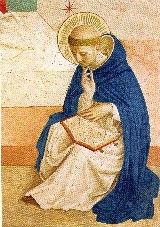THE SCHISMATIC TENDENCY IN ‘CREATION SCIENCE’
"The unity of the Church is manifested in the mutual connection or communication of its members, and likewise in the relation of all the members of the Church to one head" (St. Thomas, II-II, q. 39, a. I). From this it is easy to see that men can fall away from the unity of the Church by schism, as well as by heresy.
Leo XIII, Satis Cognitum (29.6.1896) n. 10
Catholics who subscribe to the ‘creation science’ interpretation of the early chapters of the Book of Genesis place their Catholic faith in jeopardy. The Church has ruled on this issue in 1909 and again in 1948 and those rulings were endorsed by Pope Pius XII in 1950 in his encyclical Humani Generis. In summary, the Church—
- allows freedom to its theologians to take the word yom (day) where it appears in Genesis chapter 1 either in its proper sense as a natural day, or in its improper sense of an indefinite space of time;
- permits its exegetes to discuss this question freely;
- asserts that the first eleven chapters of Genesis, while they pertain to the genus of history in a true sense, are expressed in simple and figurative language adapted to the mentality of a people of little culture; state the principal truths upon which the attainment of our eternal salvation depends; and give a popular description of the origin of the human race and the chosen people.
It follows that the ‘creation science’ assertion of a burden of proof on Catholic believers to show that the ‘days’ referred to in chapter 1 are not 24-hour days is false. It follows also that any attempt to treat these chapters of Genesis as some sort of science or history textbook is misconceived. The matter of greatest concern, however, is the implication in the ‘creation science’ view that one can ignore the guidance of the Church in interpreting the sacred text. This, as Australian theologian Fr Peter Joseph has recently commented, is pure Protestantism.
The Gnostic Impetus
A gnostic tendency, the assertion of the possession of a higher knowledge, is at the root of every schism and every heresy which has afflicted the Church. The Church may speak, but the gnostic knows better. The promoters of the ‘creation science’ view of sacred scripture join with their denial that the Church has ruled on this question, a refusal to admit that Catholics are bound by the ruling. They broadcast to all the world that Catholics can disregard the ruling. To see the Church’s authority on the interpretation of sacred scripture snubbed in this way should be a cause of great concern to Catholics. But ‘creation scientists’ go further: they imply that their view of interpretation of Genesis is the Church’s view.
There is a scandal involved here which has the potential to do enormous damage among the faithful, a scandal with the tendency to schism. St Thomas says, “[O]f all sins committed by man against his neighbour, the sin of schism would seem to be the greatest, because it is opposed to the spiritual good of the multitude.” 800 years earlier, St Augustine had expressed himself in similar terms.
I am bound to warn members of the Catholic faithful of the dangers to their faith of endorsing these views. At the very least it must be said that insofar as anyone—
- asserts the existence of a burden of proof on Catholic believers to show that the ‘days’ referred to in Genesis chapter 1 are not 24-hour days; or
- denies, whether implicitly or explicitly, that Catholic believers are bound to accept the clear meaning of the ruling of the Pontifical Biblical Commission n. viii of 30th June 1909; or,
- asserts that the ‘creation science’ view of the interpretation of Genesis chapter 1 is the view of the Catholic Church—
he is promoting error and his assertions should be rejected as dangerous to the faith.
For the purposes of clarity, I set forth again below the text of the ruling of the Pontifical Biblical Commission of 30th June 1909 (n. viii) referred to above.
Michael Baker
28th June 2006—St Irenaeus
______________________________
Whether in that designation and distinction of six days, in the first chapter of Genesis, the word Yom (day) can be taken in either its proper sense as a natural day, or in an improper sense of an indefinite space of time; and whether among exegetes it is permitted to discuss this question freely? Affirmative. (DS 3519)
Summa Theologiae II-II, q 39., a. I
Contra Epistolam Parmeniani, ii, ii, 25
|


![]()


